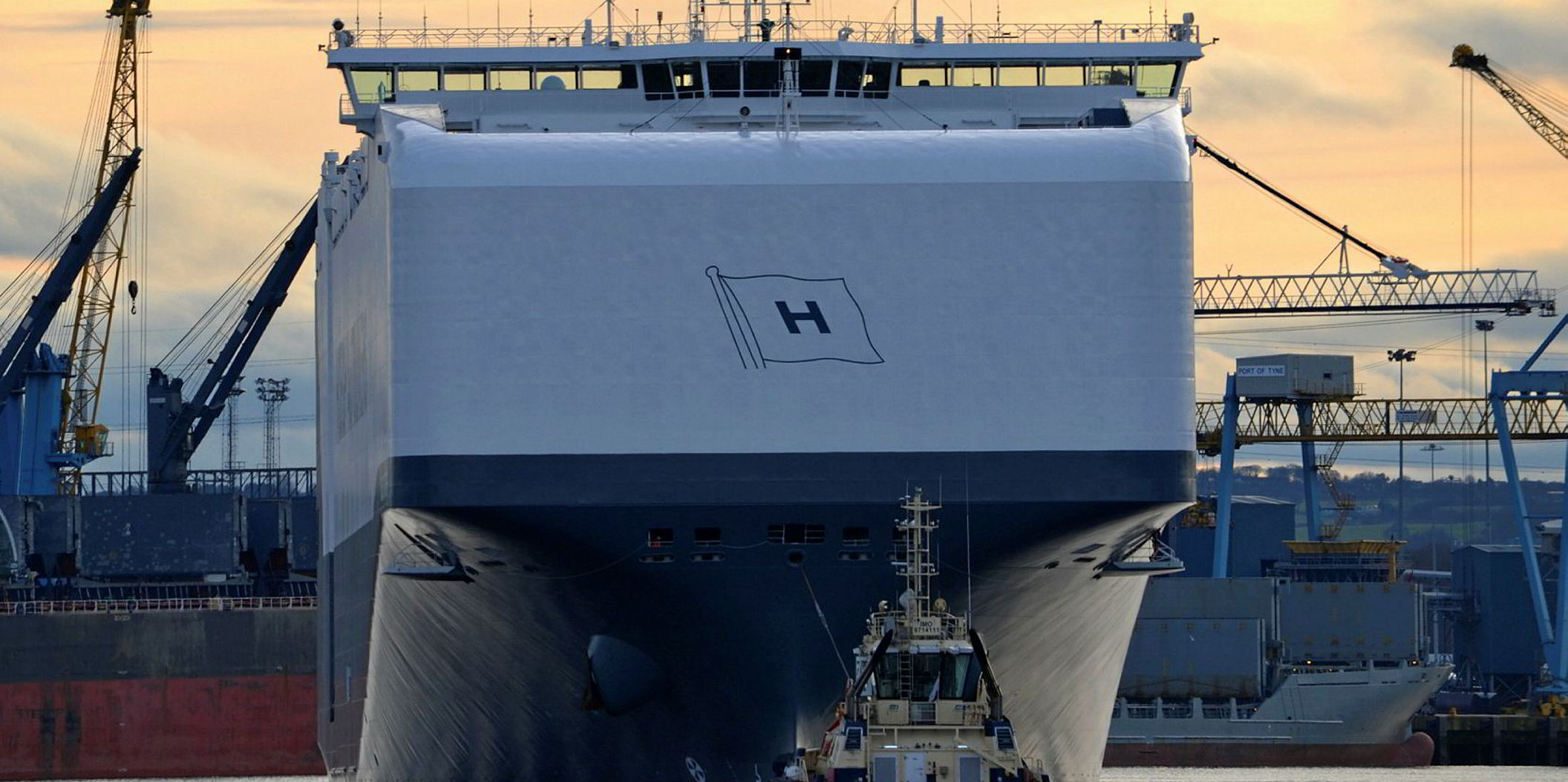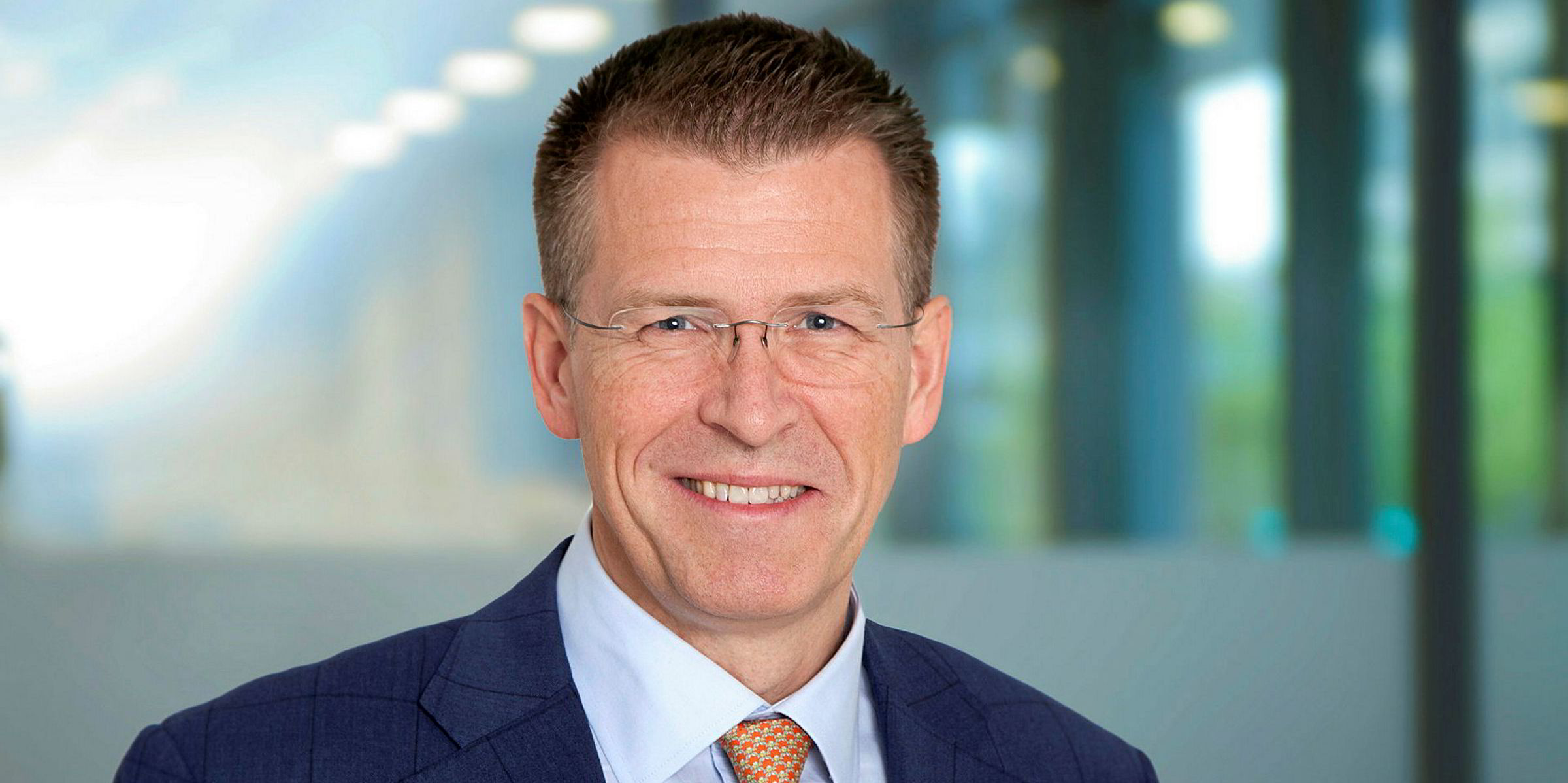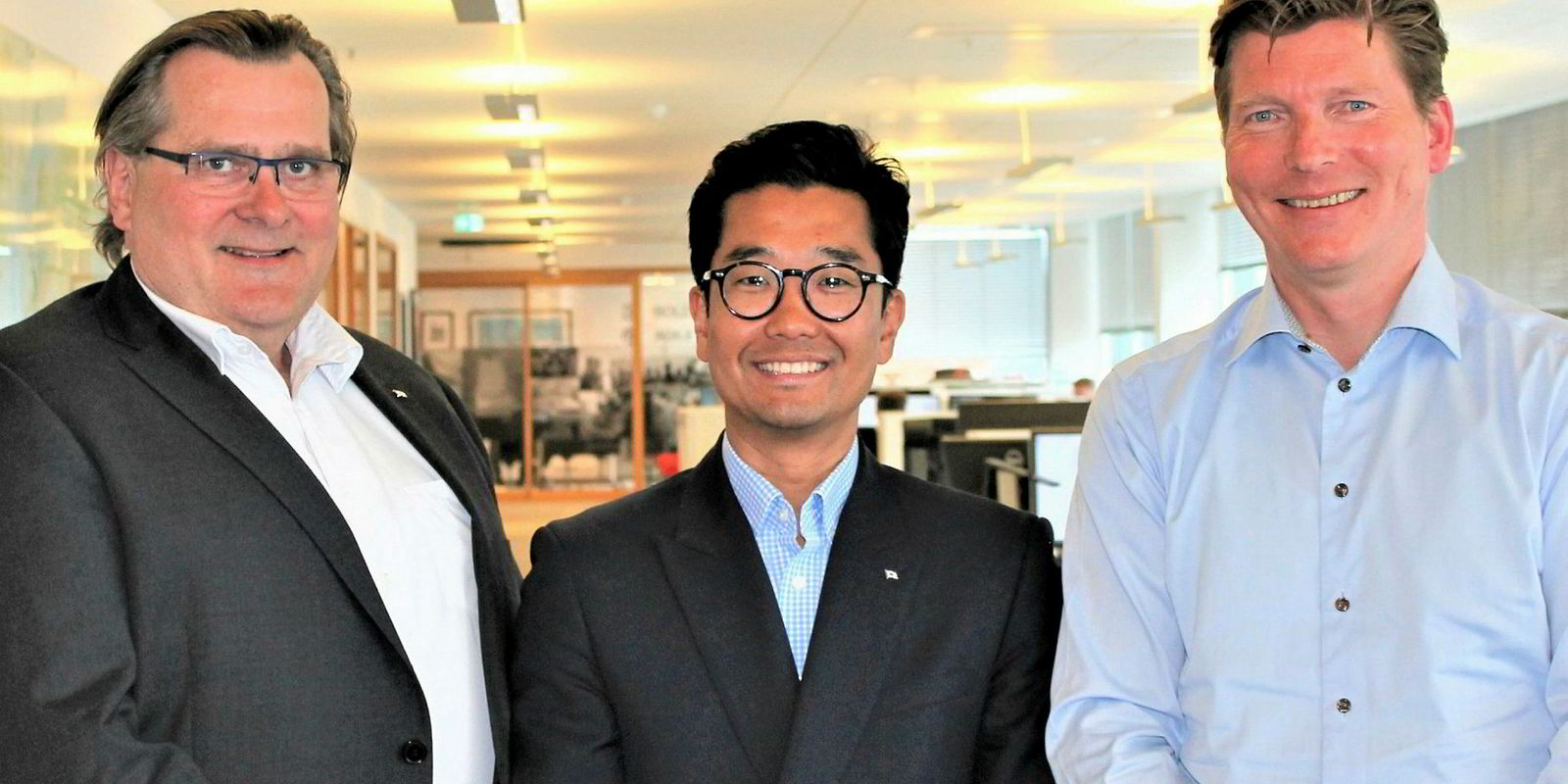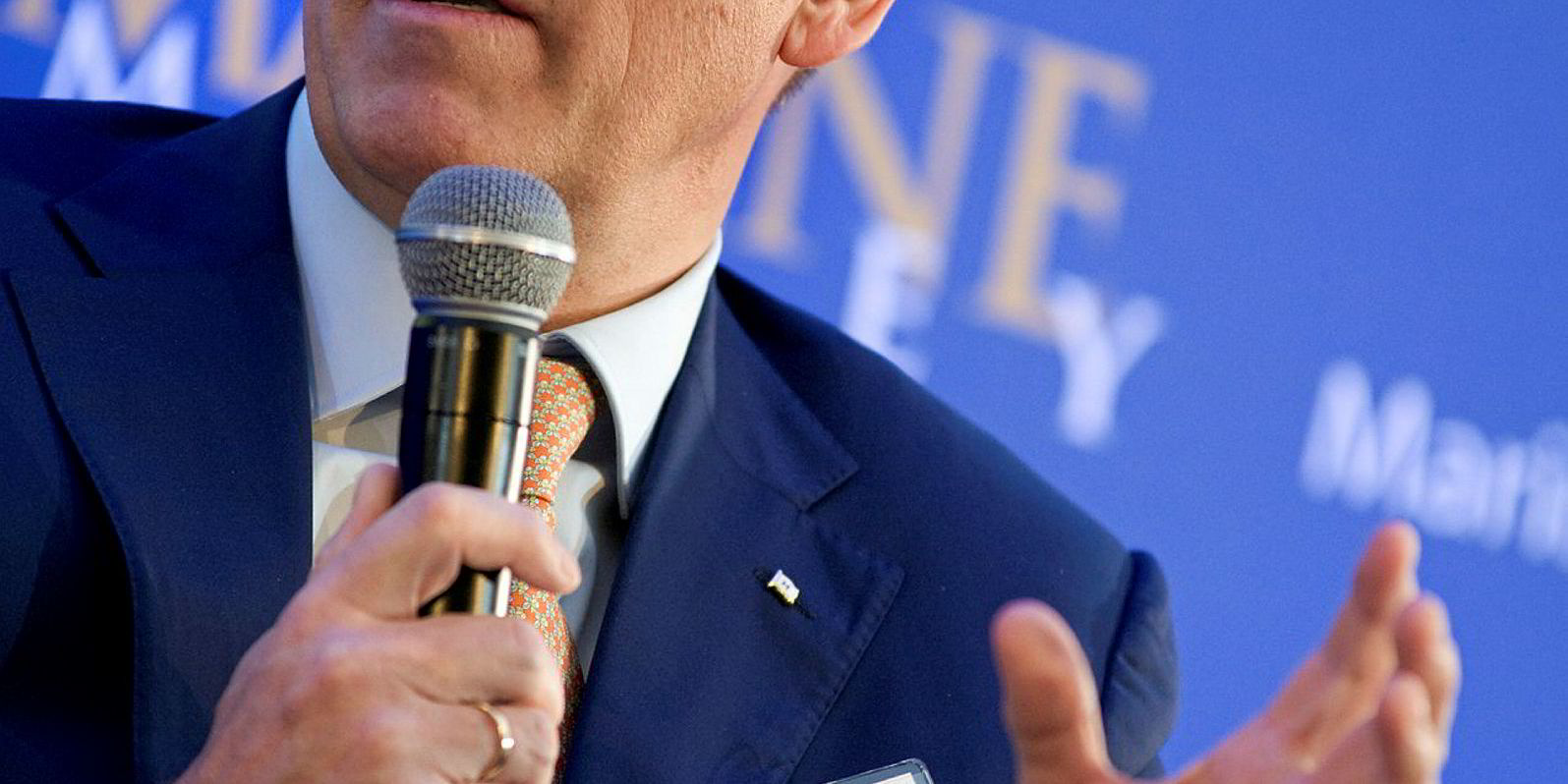Hoegh Autoliners chief executive Ivar Hansson Myklebust says the Oslo-based company considered using LNG as a fuelling option for its last series of newbuildings and it is an option for its next order.
The Norwegian car carrier owner and operator has no firm plans to build new ships, but Hoegh has been watching technical developments closely and has a positive view on LNG.
Myklebust's comments come after he told a London conference earlier this year that wider adoption of LNG as a marine fuel will require technological innovation, especially by engine manufacturers.
At the time, he highlighted the higher, albeit falling, cost of such engines and the large bunker tanks required. An increase in average vessel revenue of 20% to 35% would be needed to justify on a running day basis.
Speaking to TradeWinds more recently, Myklebust stressed that environmental issues are important to the car carrier industry and especially Hoegh, which took delivery of six post-panamax, 8,500-ceu vessels from China in 2016 and 2017.
Espen Stubberud, chief of trade and capacity at Hoegh, says the newbuildings were fuel efficient and, being well suited to the company’s long-haul trades, had brought down unit costs.
Rates 'need to come up'
“The orderbook is at an all-time low of below 3% but the segment has seen rates pressure for many, many years, and we believe rates are unsustainable and need to come up,” Stubberud says.
The company has decided not to invest in scrubbers, arguing that the extra weight and washing process simply adds to fuel consumption.
Instead, it has chosen very low-sulphur fuel oil and low-sulphur marine gas oil to comply with the IMO 2020 regulations.
Chief financial officer Ingrid Due-Gundersen says Hoegh had put together a team dedicated to the changeover, including examining different contract clauses to ensure that the majority of the extra cost is transferred to its customers — the car manufacturers.
Some clauses go back several years, since when trade patterns have changed. The extra fuel risk can be priced into contracts entered into this year.

Myklebust says Hoegh is holding “productive and constructive” discussions with its customers, who are fully aware of the challenges to the industry of the IMO 2020 sulphur cap.
He says talks to cover the extra cost involve agreeing “the new standard, the new benchmark we are moving against”.
Currently, it is simply heavy fuel oil (HFO) with ISO specification etc but, at the moment, there is no singular ISO-defined standard for low-sulphur fuel oil, which Myklebust says is “one of the uncertainties facing the shipping industry in general”.
'Still some work to be done'
Myklebust adds that he is encouraged to see refiners finally introducing the required bunker qualities in a growing number of locations.
“The availability and access to low-sulphur fuel oil we don’t think will be a problem, but there is still some work to be done from the supplier side on the standard of the product,” he says.
The 40 vessels under Hoegh’s operational control, out of a 50-strong fleet, involve more than 450 bunker tanks that need to be prepared for compliant fuel by cleaning each of them twice to remove any heavy fuel oil residues. Work has already begun to meet the 1 January 2020 deadline.
The company has adopted a “dilution” approach, allowing a gradual switch from HFO to low-sulphur fuel oil.





